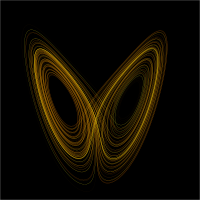
Photo from wikipedia
For secure transmission of digital images, existing cryptographic algorithms transform images into a noise-like appearance. One obvious inference that an adversary could draw is that the noise-like texture is a… Click to show full abstract
For secure transmission of digital images, existing cryptographic algorithms transform images into a noise-like appearance. One obvious inference that an adversary could draw is that the noise-like texture is a cipher, prompting to apply classical cryptanalysis. This article proposes an efficient algorithm that produces a visually coherent and meaningful cipher image to bypass the cryptanalysis. In the partial-encryption phase, the Arnold-3D map drives the permutation mechanism, whereas the implementation of the diffusion phase is done by harnessing the iterates of the chaotic Logistic map. The partial cipher is compressed using a Cantor-like pairing function that does a 4 to 1 pixel encoding to facilitate embedding. The embedding phase is implemented in the spatial domain by applying Multi-resolution singular value decomposition on the reference image and replacing the vertical, horizontal, diagonal sub-band with the encoded cipher. The encoding of pixels facilitates the transmission of the visually meaningful cipher image to be of the same size as the original image rather than four-times the original image as reported in earlier schemes. Simulation results confirm the security of the scheme.
Journal Title: Multimedia Tools and Applications
Year Published: 2020
Link to full text (if available)
Share on Social Media: Sign Up to like & get
recommendations!